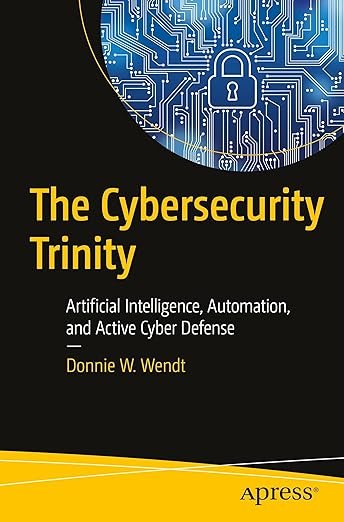AI is no longer just a futuristic buzzword in cybersecurity; it’s now the force multiplier behind everything from spam filters to insider threat detection. But despite the marketing hype, the real story is more complex. As I explore in Chapter 3 of The Cybersecurity Trinity, AI’s most powerful contribution to security isn’t magic; it’s transformation through data, pattern recognition, and intelligent automation. In this blog, we’ll take a guided tour through the evolving AI security landscape and explore how defenders are using machine learning not only to detect, but also to defend and outmaneuver.
AI’s Role in Cybersecurity: Evolution, Not Revolution
AI’s adoption in cybersecurity began modestly with spam filtering. From those early keyword-based filters, we’ve evolved to machine learning models capable of detecting phishing, malware, and account takeovers. Yet, despite its expansion, AI has primarily served as an enhancement to existing workflows, including faster triage, more thoughtful prioritization, and better detection.
Today, AI is being embedded across nearly every security function:
- Threat detection (malware, phishing, intrusion).
- Insider threat detection through user behavior analytics (UBA).
- Alert triage and prioritization in SOCs.
- Risk-based vulnerability management.
- Synthetic data generation for privacy-preserving model training.
And it’s only just getting started.
The AI-Powered Defenses Transforming Cybersecurity
🔹 Email Security Gets Smarter (But So Do the Attackers)
AI now helps detect spam and phishing with remarkable accuracy. But attackers are adapting. With generative AI tools like ChatGPT, phishing emails are becoming more persuasive and grammatically polished, making them harder to spot.
Some AI systems now go deeper by profiling users’ email-writing styles to detect account takeovers. But even that can be spoofed if adversaries use language models to mimic writing patterns. The result is a high-stakes cat-and-mouse game in which defenders must continually evolve.
🔹 Business Email Compromise (BEC): The New Front Line
BEC attacks, where attackers impersonate executives or vendors to redirect funds, can be devastating. AI helps by detecting emotional triggers, urgency cues, and abnormal sender behavior. But technology alone isn’t enough. Combining ML models with business process controls (e.g., out-of-band confirmations) offers a layered defense.
🔹 Malware and Ransomware Detection: Static, Dynamic, and AI-Enhanced
Traditional antivirus was signature-based, which was effective only until malware evolved. ML-driven static and dynamic analysis now enables classification based on structure and behavior. Techniques such as clustering and deep neural network image transformation help detect polymorphic threats. Still, dynamic sandboxing, powered by AI behavior modeling, remains essential for detecting evolving ransomware payloads.
🔹 Intrusion Detection: Ensemble ML for Complex Traffic
Modern intrusion detection and prevention systems (IDPS) increasingly rely on ML, especially ensemble models that combine classifiers to reduce false positives. Anomaly-based detection remains promising but problematic. When “normal” changes due to attacker innovations or infrastructure shifts, models must adapt or risk ignoring malicious activity.
🔹 User Behavior Analytics: Watching the Insiders
Not all threats come from outside. AI helps flag deviations in user behavior that could indicate compromised accounts or malicious insiders. But UBA isn’t foolproof. It can generate false positives and lacks intent analysis. Organizations must strike a balance between automation and human oversight, particularly when AI is used to trigger disciplinary actions.
The Alert Overload Crisis: Why SOCs Are Turning to AI
Modern SOCs are drowning in alerts. Studies show that over 60% of security incidents investigated are false positives. AI can reduce the noise by triaging alerts and highlighting high-risk threats for human analysts. The result? Faster responses, reduced burnout, and more focus on real danger.
AI in Vulnerability Management: From Patch Chaos to Prioritized Risk
With tens of thousands of new CVEs annually, security teams can’t patch everything. AI is stepping in to:
- Identify which vulnerabilities apply to which systems.
- Predict the likelihood of exploitation.
- Prioritize patching based on context: asset value, existing controls, and threat intelligence.
The key shift? Moving from CVSS-driven patching to risk-driven decision-making, tailored to each organization’s environment.
Synthetic Data: Powering Privacy and Prototyping
AI-generated synthetic data is transforming model development. Developers can now train or test ML models without exposing PII or relying on sensitive production data. In security use cases with class imbalance (e.g., rare malware or fraud instances), synthetic oversampling helps build more accurate classifiers. However, fidelity and utility must be closely monitored, as poor synthetic data can compromise your model’s performance.
Balancing the Equation: Accuracy, Risk, and Trust
AI isn’t a silver bullet. False positives can disrupt business, while false negatives can allow threats to go undetected. As I warn in the book, high accuracy on unbalanced data can be misleading. A model that classifies everything as benign might boast 99% accuracy but miss every attack.
The challenge for security teams is to strike a balance between performance and explainability, trust, and ethical use. Metrics such as precision, recall, and F1 score should be part of the conversation. So must human oversight.
Final Thoughts: From Enhancement to Integration
AI’s impact on cybersecurity is no longer speculative; it’s operational. From phishing defense to insider detection and vulnerability prioritization, AI is embedded in the DNA of modern security operations. But true transformation requires more than tools. It requires strategy, trust, and a profound understanding of both the technology’s potential and its limitations.
In the next phase of the cybersecurity journey, AI won’t only help us respond, but also enable us to take proactive measures. It will help us predict, prevent, and protect if we build and deploy it wisely.
Please check out my book, The Cybersecurity Trinity: AI, Automation, and Active Defense.
